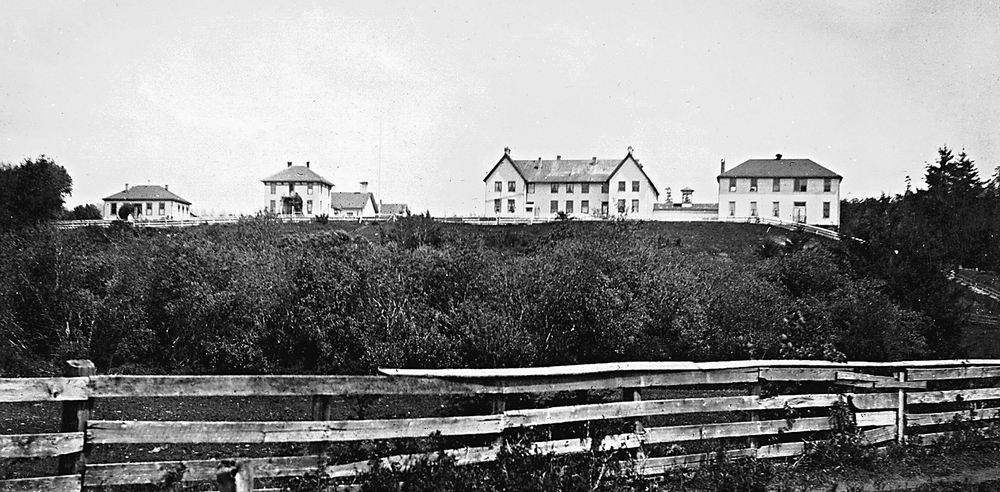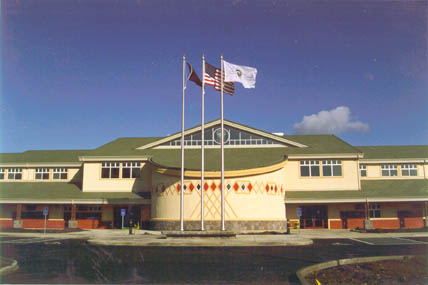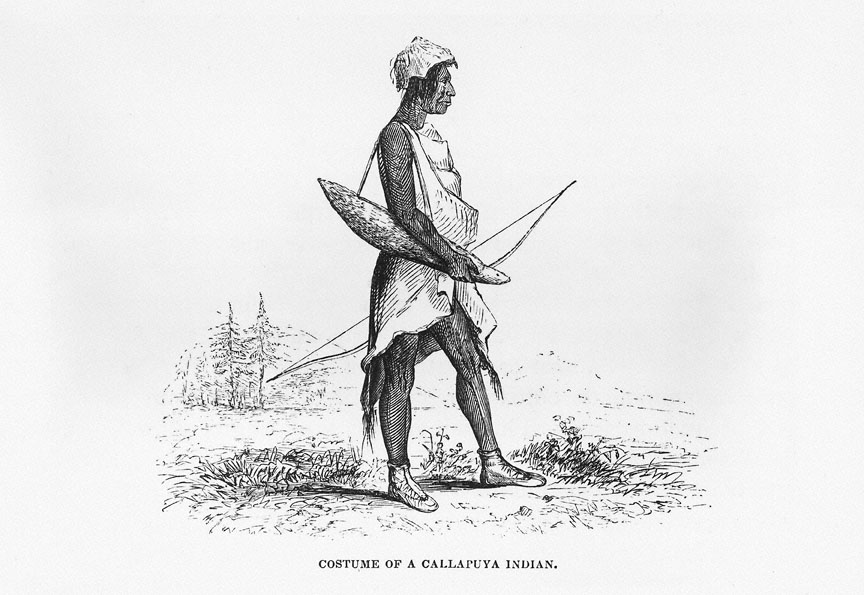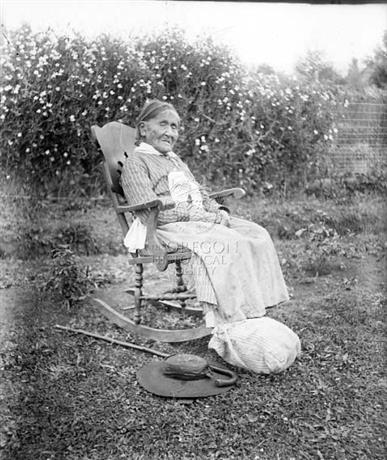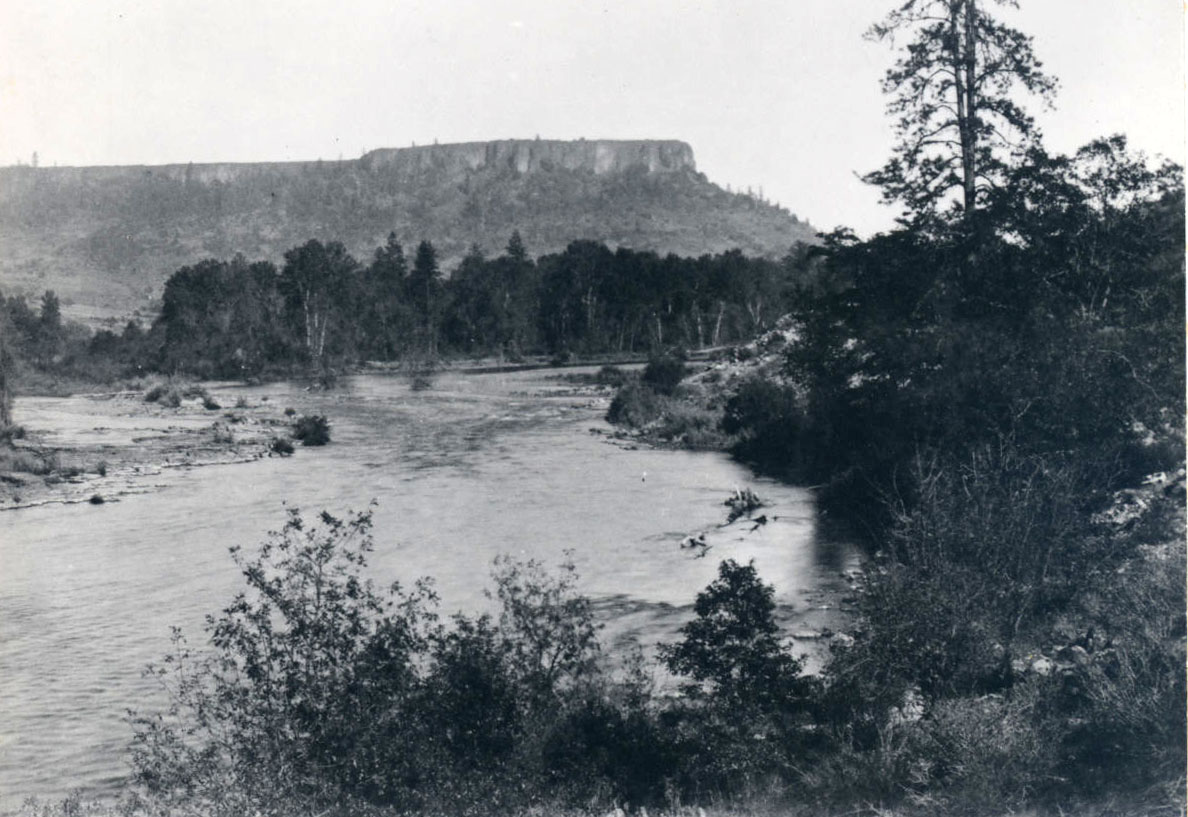The treaty with the Confederated Bands of Kalapuya (1855) is the only ratified treaty with the Kalapuyan groups who are indigenous to the Willamette Valley. The treaty dispossessed the Kalapuyans and their descendants of their aboriginal lands and effectively transferred the vast wealth of the Willamette Valley to non-Indians.
In 1850, Congress created the Willamette Valley Treaty Commission, which was charged with securing treaties that would cede Indian title to the valley and ensure the removal of the Kalapuyans and Molalas east of the Cascade Mountains. A year later, in the spring of 1851, the commission—comprised of Joseph P. Gaines, Beverly S. Allen, and Alonzo Skinner—negotiated a series of agreements with the Santiam, Tualatin, Yamhill, and Luckiamute Kalapuyan bands. In these agreements, the native groups agreed to cede the majority of the Willamette Valley, while retaining small reserves within their traditional territories. None of the groups agreed to leave the valley.
These initial agreements were never ratified by the Senate, because Congress had revoked the commission's powers a few months earlier, in February 1851 (though the commissioners did not learn of this development until months later), and the agreements did not oblige the Kalapuyans to relocate east of the Cascades.
Between 1851 and 1855, the Kalapuyans faced increasing harassment and encroachment by American settlers. Finally, in January 1855, Superintendent of Indian Affairs Joel Palmer met with Kalapuyans, several bands of the Clackamas Chinook, and northern Molala peoples at Dayton and negotiated another treaty with the Confederated Bands of the Kalapuya, also known as the Bands of Willamette Valley Indians. The Kalapuyans, who had been decimated by disease and whose population had declined to about 400 people, ceded nearly the entirety of the Willamette Valley to the United States government. In return, they were promised a permanent reservation; annuities; supplies; educational, vocational, and health services; and protection from violence by American settlers. The U.S. Senate quickly ratified the treaty in March 1855.
The details on the exact location of the reservation for the Kalapuyans were left intentionally vague, largely due to the tense and often violent nature of settler-Indian relations in western Oregon during the early 1850s (the Rogue River War was then raging in southern Oregon). In order to resolve the problematic issue of where to relocate the state's Native peoples, the original Coast Reservation was created by executive order in 1855. It was intended to be the home for the Coast, Umpqua, and Willamette Valley groups and a majority of the Rogue River peoples. This vast tract, roughly one-third of the Oregon coast, included the area that later became the original Grand Ronde Reservation in 1857. The Kalapuyans, Clackamas, and Molalas of the Willamette Valley were forcibly removed from the Willamette Valley to Grand Ronde Encampment during the winter of 1855-1856.
Although the federal government terminated its trust relationship with the Confederated Tribes of the Grand Ronde Indian Reservation in 1954, the ratified treaties with the tribes, including the Kalapuya Treaty of 1855 (also called the Willamette Valley treaty), played an important role in the tribes' successful bid for restoration and community revival in the 1980s. Following the Confederated Tribes' restoration in 1983, treaty obligations were again recognized, allowing for much-needed health and human services benefits for tribal members and for government-to-government negotiations on a variety of issues.
-
![]()
"The Kalapuya Communities" map, c. 1850.
Center for Columbia River History
Related Entries
-
![Alonzo A. Skinner (1814-1877)]()
Alonzo A. Skinner (1814-1877)
Alonzo A. Skinner was the first judge in the Pacific Northwest, althoug…
-
Coast Indian Reservation
Beginning in 1853, Superintendent of Indian Affairs Joel Palmer negotia…
-
![Confederated Tribes of Grand Ronde]()
Confederated Tribes of Grand Ronde
The Confederated Tribes of Grand Ronde Community of Oregon is a confede…
-
![Kalapuya Man Drawing]()
Kalapuya Man Drawing
Costume of a Callapuya Indian, also known as Kalapuya Man, is one of th…
-
![Kalapuyan peoples]()
Kalapuyan peoples
The name Kalapuya (kǎlə poo´ yu), also appearing in the modern geograph…
-
![Willamette Valley Treaties]()
Willamette Valley Treaties
From 1848 to 1855, the United States made several treaties with the tri…
-
![Willamette Valley Treaty Commission]()
Willamette Valley Treaty Commission
On June 5, 1850, An Act Authorizing the Negotiation of Treaties with th…
Related Historical Records
Map This on the Oregon History WayFinder
The Oregon History Wayfinder is an interactive map that identifies significant places, people, and events in Oregon history.
Further Reading
Beckham, Stephen Dow, ed. Oregon Indians: Voices from Two Centuries. Corvallis: Oregon State University Press, 2006.
Beckham, Stephen Dow. "History of Western Oregon Since 1846." In Handbook of North American Indians. vol. 7. Northwest Coast. Ed. Wayne Suttles. Washington D.C.: Smithsonian Institution, 1990, 180-88.
Berg, Laura, ed. The First Oregonians. 2d ed. Portland: Oregon Council for the Humanities, 2007.
Spores, Ronald. "Too Small a Place: The Removal of the Willamette Valley Indians, 1850-1856." American Indian Quarterly. 17:2 (Spring 1993): 171-92



